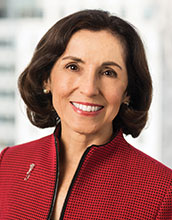Press Statement 17-001
Statement from NSF director on Event Horizon Telescope
Telescope network to try and capture image of supermassive black hole for first time
April 5, 2017
This material is available primarily for archival purposes. Telephone numbers or other contact information may be out of date; please see current contact information at media contacts.
(Clarification:) This week, the Event Horizon Telescope (EHT) begins a 10-day attempt to capture the image of the supermassive black hole at the center of the Milky Way galaxy. The EHT derives its extreme magnifying power by connecting widely spaced radio dishes across the globe into an Earth-sized, virtual telescope. The National Science Foundation (NSF) has been a longtime supporter of the EHT program, which is receiving a considerable boost in sensitivity and resolution through inclusion of the NSF-funded Atacama Large Millimeter/submillimeter Array (ALMA), located in Chile, into the EHT world-wide virtual telescope. NSF Director France Córdova issued the following statement to mark the occasion:
This week heralds an exciting and challenging endeavor for astronomy. The Event Horizon Telescope will seek to capture a first-ever image of the supermassive black hole at the center of the Milky Way, our home galaxy. Radio telescopes from around the world, anchored by the ALMA observatory in Chile, will work in concert to test some of physics' most fundamental theories. Success will depend on both a vast network of observations and analysis of voluminous data. NSF has funded this ambitious project for the past decade, including providing major funding for ALMA. We are proud to support such a visionary goal.
-NSF-
Media Contacts
Ivy F. Kupec, NSF, (703) 292-8796, email: ikupec@nsf.gov
The U.S. National Science Foundation propels the nation forward by advancing fundamental research in all fields of science and engineering. NSF supports research and people by providing facilities, instruments and funding to support their ingenuity and sustain the U.S. as a global leader in research and innovation. With a fiscal year 2023 budget of $9.5 billion, NSF funds reach all 50 states through grants to nearly 2,000 colleges, universities and institutions. Each year, NSF receives more than 40,000 competitive proposals and makes about 11,000 new awards. Those awards include support for cooperative research with industry, Arctic and Antarctic research and operations, and U.S. participation in international scientific efforts.
Connect with us online
NSF website: nsf.gov
NSF News: nsf.gov/news
For News Media: nsf.gov/news/newsroom
Statistics: nsf.gov/statistics/
Awards database: nsf.gov/awardsearch/
Follow us on social
Twitter: twitter.com/NSF
Facebook: facebook.com/US.NSF
Instagram: instagram.com/nsfgov



